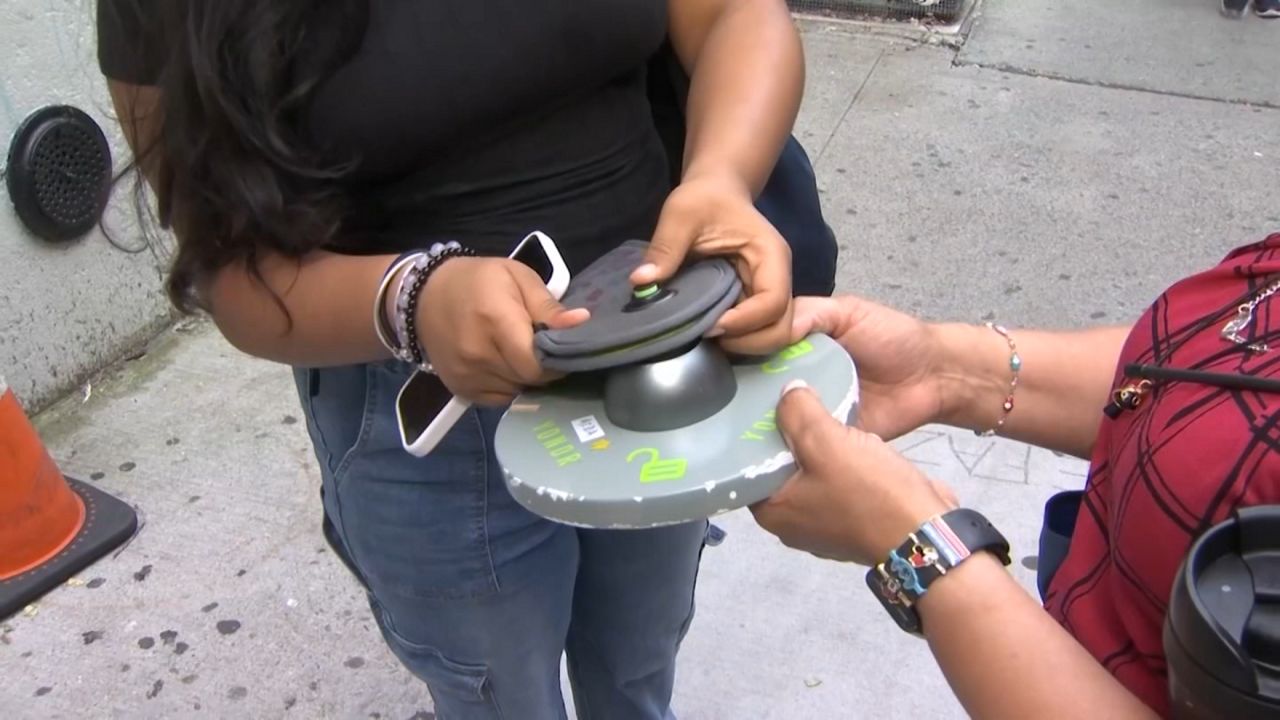School — and a new ban on smartphones — starts in just six weeks.
The Panel for Educational Policy Wednesday night passed a citywide regulation banning the use of phones in school buildings during the school day. However, it’ll be up to each public school to decide how they want to collect or store those cellphones.
That doesn’t leave schools much time to create their own policies for storing phones during the day, but education department officials say half of the city’s schools were already restricting phones, and all of them can get financial support to get systems in place by September.
“Schools are going to tell us what they need — which policy they’re going to employ for their schools. And we’re going to give them funding per student to do exactly what it is they’ve done last year, or if it’s new, this year that they’re doing to meet the meet the need for their particular policy,” Mark Rampersant, the security director for New York City Public Schools, said.
He says there are essentially two methods for how to store cellphones during the day.
One is using pouches, like those made by the company Yondr. Students lock their phones into the pouch in front of school staff at the start of the day, making them unusable. They’re unlocked on the way out of school.
“What the pouch does is, it prevents the student, the school, from having to collect. The young person keeps the pouch on their person in their bookbag. It’s secured,” Rampersant said.
The Yondr system can cost up to $30 a student, but the city is providing schools with $25 million to implement the ban, on top of $4 million from the state — making it likely more schools may opt in to the pouches.
Schools can also opt to collect and store the phones during the school day, with designated school staff responsible for collecting at the start of the day and returning at the end.
“Young people come in, hand the device over. It’s put into a storage bin, usually by school or by grade. And then as they exit the building at the end of the day or in that last period, class, it’s disseminated back to young people at the end of the day. And it’s a simple process, and schools have it down to a science,” Rampersant said.
The state law does not require phones to be collected, but Rampersant says one thing that won’t be allowed is simply telling students to keep the phones out of sight.
“We’re not going to accept the ‘drop it in your book bag, and if I don’t see it, we don’t take it,’ right? We need to make sure that we put preventative measures so that young people are not enticed to go into their bag and make a quick phone call, go into that bag and send a quick text message or others,” he said.
The ban was a major initiative for Gov. Kathy Hochul, who has said phones — and particularly social media — are harmful to students’ mental health.
Educators have told NY1 that in addition to being a distraction in the classroom, young people often use the phones to record, publicly post and bully one another.
“From a safety and security perspective, to see kids in physical confrontation and recording it and posting it, or kids being bullied in recording and posting it, that’s super unfortunate,” Rampersant said. “Just think about being a young person and having a physical confrontation and then just your friends talk about it tomorrow. Now you have a physical confrontation in Queens, and they know about it in Staten Island within minutes.”
Rampersant said students are often creative enough to find ways around rules, but that it’s the job of adults running the system to minimize their ability to do so.
One thing that won’t be left entirely to individual schools is discipline. The citywide policy prohibits suspending a student simply for accessing a phone.
Instead, there should be other steps taken first. If a student breaks open a Yondr pouch, for example, the student might lose the privilege of keeping their pouched phone in their bag.
“If you catch a young person on the phone, that isn’t a suspendible thing, right? Suspendible incident. You should literally talk about the why — ‘I was calling my grandma. I was calling my mom. I had an emergency,’ whatever the case may be,” he said.
Schools where the policy will be new this fall should be communicating with parents in the coming weeks, Rampersant said.
“Parents should not see this as a new initiative on September 4th, when they walk in the building. They should have prior notification of what the policy is and what the clear expectations are for young people and supports for parents,” he said.


